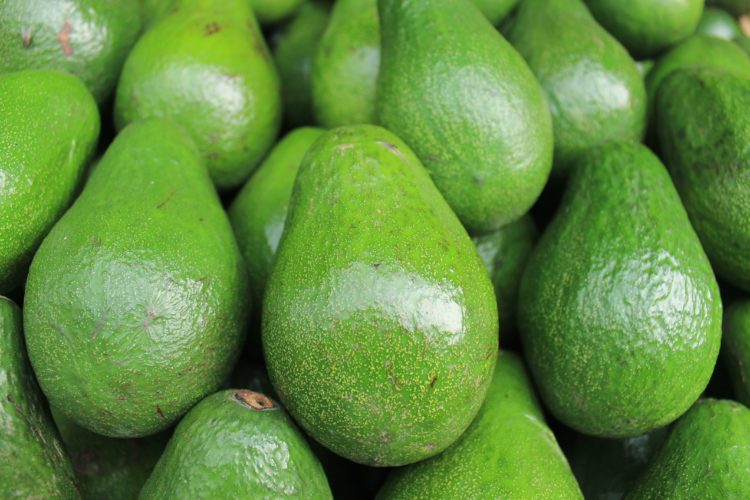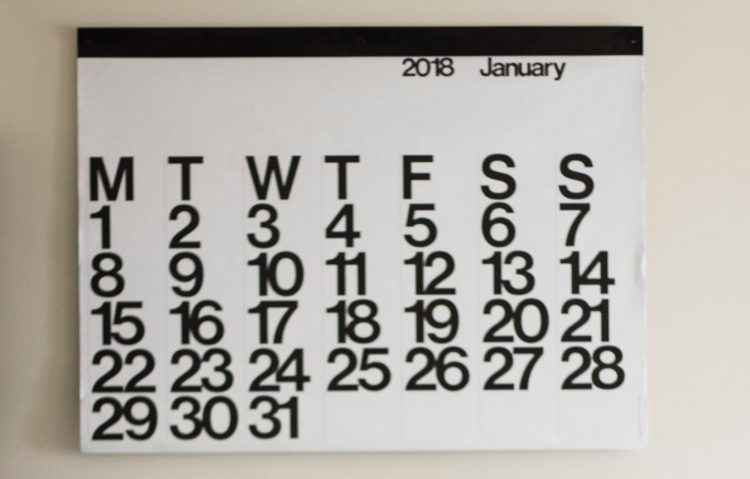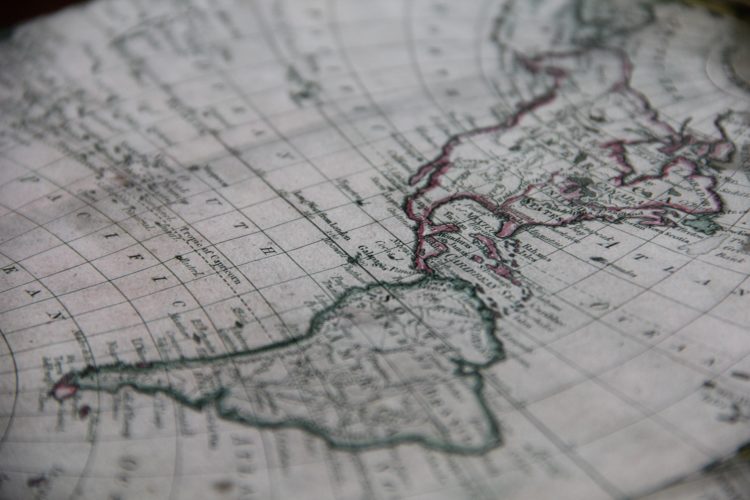While the U.S and Colombia may share the same land mass (albeit 2,622 miles apart), they can certainly feel like totally separate worlds. Differences in language, currency and weather are obvious between the two, but what about the more nuanced ways of living? Especially in a city like Medellín where locals are fiercely proud of their Paisa identity and around 20% of all tourists are from the U.S, how do attitudes and those smalls things that can only be noticed as a foreign compare? From timekeeping and safety to parties and bags of milk (we’re still baffled), here are the subtle cultural differences between Paisas and Americans:
Personal space

Paisas are known for being welcoming and friendly, and while that’s great for socializing, it has its downsides. Generally speaking, Colombians have a much smaller sense of personal space than Americans. Whether you’re in line at the supermarket, walking down the street or talking at a bar, chances are a local will be stood right behind your heels, ever so slightly breathing on you. Similarly, on the metro, be prepared to be firmly squeezed into the carriages as piles of people force their way on. At very least, Colombians are shorter than Americans, so you don’t have to be the one with your face in an armpit.
Timekeeping

It might be a cliché but Paisas are no exception to the more relaxed concept of time in Latin America. Whereas in the U.S, if you and friends arrange to meet at 9 pm, everyone will show up at 9 and stay in regular contact before, in Medellín, you’ll be lucky if the night out happens at all. Paisas are famous for being late, so if you’re making plans, it’s best to assume the locals won’t arrive until at least two hours after the agreed time, and to always be prepared with a plan B.
Health and safety

As a country known for its culture of suing, the U.S is one the most safety-conscious places in the world. Training videos, waiver forms and health insurance ensure that most dangers are identified and isolated in everyday life in the states. The same can’t be said for Colombia and Medellín. Welding is bizarrely commonplace in the street (typically done without a mask or gloves and complete with hot sparks flying around), plus a lot of the roads have potholes and broken tiles, and taxi drivers remove passenger seatbelts. Oh, and if you opt to go paragliding over Medellín, the time between arriving and frantically running off a hill is about 60 seconds, minus any preparation or safety talks – but that’s part of the thrill really.
Parties & noise levels

Noise complaints in the U.S are usually an effective way to stop a party or show that noisy neighbor just how serious you are. In Medellín, a noise complaint won’t get you more than confused looks and an offer to join in. When Paisas rumban (party) it’s going to be a long, loud event, filled with Aguardiente, singing and dancing. Equally, during the day, Medellín is a boisterous city – there’s always the faint sound of reggaetón coming from somewhere, as well as an aguacate man (see the section below) and a soccer match. While the states have laws about noise levels and curfews, Colombia has none – meaning the nightlife is great but early nights never quite seem to happen.
Street vendors

New York City may have hot dog stalls, San Diego may have taco stands, but Colombia has avocado carts. Now, we’re not talking tiny, overpriced avocados from Whole Foods: we mean huge, green dinosaur eggs that only cost 3,000 pesos (under $1 USD). Not only are these avocados available everywhere in Medellín, there are also locals who pull take the carts around residential streets for personal delivery – you’ll recognize them from the classic “Aguacate-aguacate” call. It’s also not just avocadoes that get the door-to-door treatment, Medellín residents can purchase tamales, brooms, mirrors and ice creams from their local cart guy too.
Using voice notes

If you’re from the U.S you’ll probably send text messages to your friends and family on a daily basis. In Colombia, people send voice notes instead. As a result, the street and metro are normally filled with people speaking into their phones or openly playing voice messages from other people (sometimes in what sounds like the world’s fastest Spanish). What’s cool about voice note culture is that it’s an awesome way to practice listening and speaking in another language, and doesn’t have to be reserved to just people you know – restaurants, real estate agents and businesses will communicate via voice notes as well.
Public holidays

Colombia is among the top five countries with the highest national holidays in the world, totaling 18 days every year. In comparison to the U.S, which has around 10, Colombia offers its residents over an extra week off work annually. The public holidays are mostly for religious dates but many Paisas use the opportunity to get out of the cities and enjoy long weekends in fincas amongst the beautiful Antioqueño hills.
The ‘American’ argument

Rather surprisingly, one of the biggest cultural differences between Americans and Paisas is the distinction between continents. For a lot of Colombians, North America and South America don’t exist; instead both are classified as one continent: America. Naturally then, someone from the U.S saying they’re American doesn’t translate, as Colombians deem everyone from Canada to Argentina as American. To complicate things further, some Colombians also discount Antarctica as a continent, so it’s not unusual to hear people talk about the ‘five continents in the world’.
Living at home

Typically, in the U.S, people leave their family home at the age of 19, usually for college or a job. However, Colombians places a lot of emphasis on family values and don’t tend to move out of the family home until 25 – 28 or until they are married. It’s relatively normal to meet Paisas in their 30s who still live with their parents and grandparents or couples in a long-term relationship who don’t live together. While attitudes are definitely changing with the younger generation, the idea of staying in the family home well into your late 20s is commonplace in Colombia and has been known to make dating here tricky…
Milk in a bag

In a region where farming and agriculture is prominent, you might expect that fresh produce like milk is served in a glass bottle or a sturdy carton, ready to be plucked from the fridge. Nope. Most of Colombia’s milk comes in plastic bags, which people place in a jug (still in the bag) to serve. While it is possible to buy milk in cartons, most locals opt for the bag. If this phenomenon isn’t odd enough, carrying these bags of milk home from the supermarket also feels like having a stash of new pet goldfish in your backpack.
There are undeniable cultural differences between Paisas and Americans, however, these contrasts are what make both nationalities interesting and unique. We recommend sharing stories about where you’re from and the novelties you find in Colombia with locals, who more likely than not, will be thoroughly entertained by the new perspective.












Just a few things Using voice notes is this something new? never seen it. As for the packing in, you haven’t ridden the US Subways/public transportation have you, they are the same. Living at home, while some still go off to college, most young people are now living at home until late 20’s early 30’s. You might also want to remove the word flaky in Timekeeping section , while Colombian’s in general are notoriously for being late, they are anything but flaky.. seem in the last 14 years Colombian culture is finding its way into America’s culture. Colombians are good at assimilating people into their ways….
Loud music can now be reported see article.
https://colombiareports.com/5-things-know-colombias-new-police-code/
Colombian girls are flaky, that much is true. As for everyone else, I wouldn’t know.
In regards to the milk you forgot the eggs. If the USA did the same with the milk and eggs, think of the energy savings that would apply. Milk is pasteurized at a high temperature not requiring refrigeration until opened. Eggs are not washed when packaging therefore they do not need refrigeration. In the USA eggs are washed, therefore removing the natural sealant that prevents bacteria from entering the egg. But, the FDA requires washing to prevent samenila poisoning. But, the US has a higher case of samenila poisoning then all of Latina American. Latina’s do not have egg salad or potato salad, and the US government can’t figure that out, that it is the main source of samenila poisoning from eggs in the USA
I have a dual citizenship and truly had been enjoying living in Medellin, Colombia.
As any other culture, everyone had their unique way of living, however, this article should make quite clear that no all Colombia’s milk comes in plastic bags. It is also available in sturdy carton or glass bottles – just like you will buy it in the USA, therefore, it is you OWN choice on how you want to buy it.
Noise level? Yes, in Medellin are laws regarding noise levels.
Distinction between continents? The writer of this article forgot to mention the fact that Colombians are very well educated people and in Medellin you will find a large percentage of them too.
In other words, Medellin is a very cosmopolitan city with lots of opportunities and things that embrace other cultures making people feel welcome. They are NOT flaky people.
Did you know that the Metro system in Medellin is more that 20 years old? Are the public transportation systems in the USA as clean as the Metro system in Medellin? In Medellin’s transportation system you don’t see any graffiti at all and all stations are extremely clean.
Paisas are happy people, very prosperous and cordial that know how to live according to their own budget.
Paisas work to live and they don’t live to work. They are genuine and less materialist!